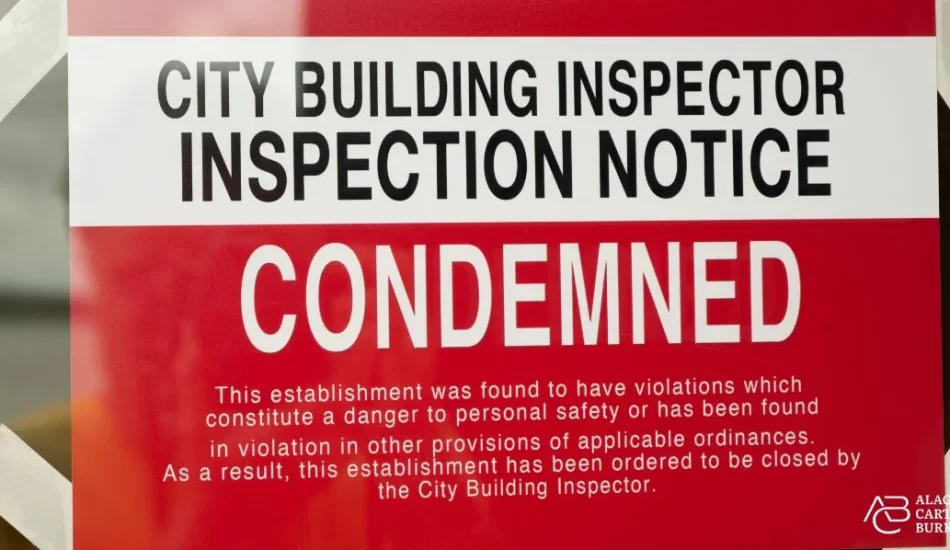What to Do After Receiving a Condemnation Notice in Texas


If you own land or property in Texas, then you might be at risk of having your property taken or condemned. Legally authorized entities can condemn your property if they plan to use it for the public good. If you find yourself in this situation, you need to know what to do after receiving a condemnation notice in Texas. You have rights and if you need to take action, consider hiring an attorney who is experienced in condemnation cases.
What Is Condemnation?
Condemnation is the legal process wherein entities can take land or private property from its owner. In Texas, property can only be condemned by parties with eminent domain, which legally authorizes certain parties to take private property for public use. Without eminent domain, a person’s property cannot be legally condemned.
Additionally, the property owner must be adequately compensated for their property. This means they must be compensated for the market value of the property, which is determined by an appraisal and, sometimes, legal proceedings.
What Is the Condemnation Process?
The purpose of the condemnation process is not to determine whether the party has eminent domain, though civil litigation does sometimes ensue. The main goal is for both parties to agree on adequate compensation. Here are the main steps in the process:
- First, the condemning party must present the landowner with the Texas Landowner’s Bill of Rights, either before or at the same time they express their plans to take the property.
- Secondly, if the Bill of Rights has not been previously provided, the condemning party must send it to the last known address of the property owner. In all, the condemning party has seven days to present the Bill of Rights to the property owner before making their final offer on the property.
- Finally, the condemning party must make a bona fide offer on the property. This offer must be in writing, and the party with eminent domain authority must present an official appraisal of the property at the time of the offer. A bona fide offer also includes compensation for damages to any part of the property that is not taken.
Once these procedures are followed, a property may be condemned, but the property owner still has a right to reject the offer. Often, property owners choose to hire a lawyer to negotiate the offer so they can obtain adequate compensation.
Who Can Receive a Condemnation Notice?
Arguably, the most important stipulation of eminent domain is that property must be used for public good. Examples of governmental or private entities condemning property for public good are:
- Utility companies installing pipes, poles, or lines
- Building infrastructure, such as sports stadiums, railways, schools, prisons, or roads
Once an entity can prove its eminent domain authority, it can proceed to take the property after following the necessary procedures. In essence, anyone’s property can be at stake for condemnation as long as there aren’t legal objections. Still, if you receive a condemnation notice, there are several actions you can and should take.
What Do I Do After I Receive a Condemnation Notice?
If you have been notified of the condemnation, that means you have received the Texas Landowner’s Bill of Rights. The next step is for the party to make a bona fide purchase offer for your property with a certified appraisal. The next step is for the owner to either accept or reject the offer, which is the market value of the property. If the owner rejects, they should hire a lawyer to negotiate a better offer.
If an agreement can’t be made, the party proposing to take the property will file a claim in court. Then, the court will appoint special commissioners made up of three local landowners to assess adequate compensation for the owner. It is important to note that these condemnation proceedings are not to determine if the condemning entity has eminent domain rights or whether the taking is actually for the public good; it is only to decide compensation.
FAQs
What Is the Condemnation Process in Texas?
The condemnation process encompasses the legal procedures that eligible entities use to take private property in Texas. To be eligible, the party, typically a governmental entity, must be legally authorized to take the property for public use. The party must then follow the appropriate procedures:
- Notifying the property owner
- Presenting the Texas Landowner’s Bill of Rights
- Making a bona fide offer
Once these are completed, they can take the property if the owner agrees on the value. If not, legal proceedings may ensue.
What Is the Timeline for Condemnation in Texas?
If either party objects to the award granted by the commissioners, civil litigation can take six months or more. However, from notice of condemnation to accepting or rejecting the offer, the timeline is shorter. First, the property owner must receive the Bill of Rights within seven days of the offer. The timeframe between the initial offer and the final offer is a window of 30 days. If there is no agreement, the condemnor may file for condemnation within 14 days.
What Happens If a Landowner Rejects a Condemnor’s Offer?
If a property owner rejects the condemnor’s offer, the condemnation process begins. The condemnation process involves a legal hearing held by special commissioners in a local court. Additionally, at least three days before the condemnation hearing, landowners must provide the condemning party with an appraisal to support their claims for adequate compensation.
Where Does the Process of Condemnation Take Place?
The process of condemnation takes place in the court of the county in which the property owner resides. However, in some cases, part of the property is located in another county. In that case, condemnation proceedings can take place where the part of the property being condemned is located. In general, the process occurs between:
- The private property owner
- The condemnor, usually a governmental entity, that has eminent domain
- Special commissioners
Contact Alagood Cartwright Burke PC
If you receive a condemnation notice, it is important that you know the procedures. You have a right to adequate compensation before releasing your property. If you need guidance about the condemnation process, contact our offices at Alagood Cartwright Burke PC today.

